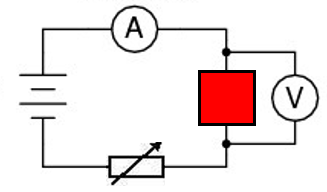- A pencil line (baseline) is drawn 1cm from the bottom of the paper. Pencil will not dissolve in the solvent, but if ink were used instead it might dissolve and interfere with the results of the chromatography.
- A spot of each sample of dye is dropped at different points along the baseline.
- The paper is suspended in a beaker which contains a small amount of solvent. The bottom of the paper should be touching the solvent, but the baseline with the dyes should be above the level of the solvent. This is important so the dyes don’t simply dissolve into the solvent in the beaker.
- A lid should cover the beaker so the atomosphere becomes saturated with the solvent. This is so the solvent does not evaporate from the surface of the paper.
- When the solvent has travelled to near the top of the paper, the paper is removed from the solvent and a pencil line drawn (and labelled) to show the level the solvent reached up the paper. This is called the solvent front.
- The chromatogram is then left to dry so that all the solvent evaporates.
Common solvents are water or ethanol. The choice of solvent depends on whether most of the dyes are soluble in that solvent.

